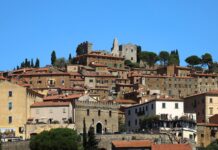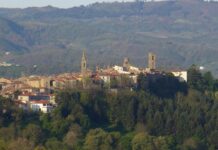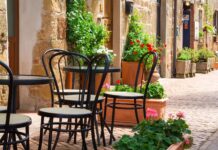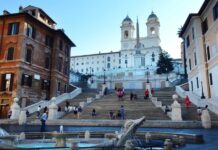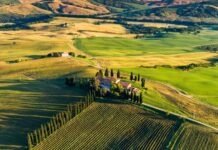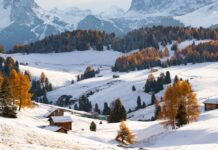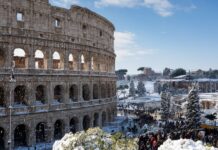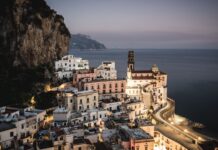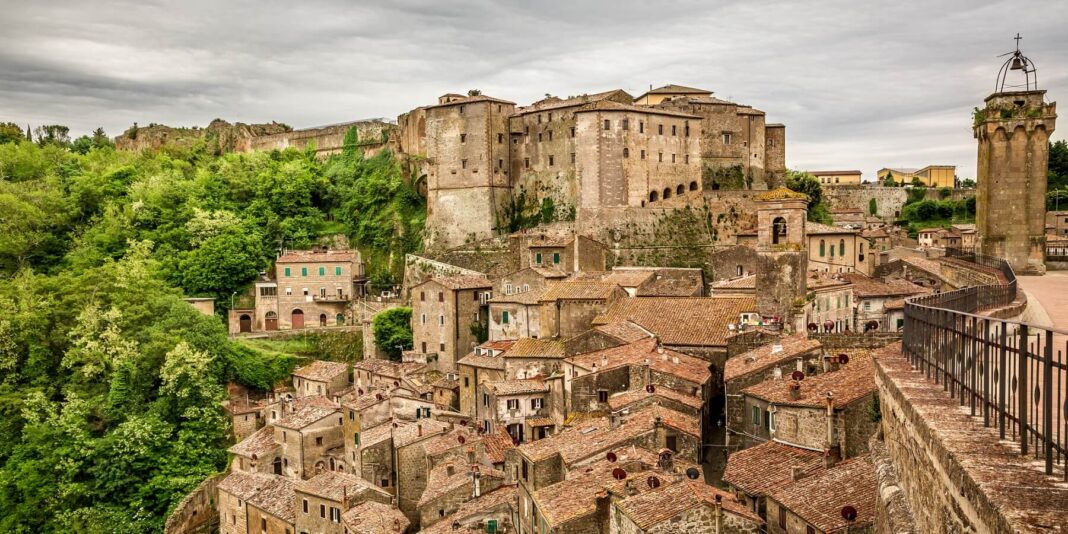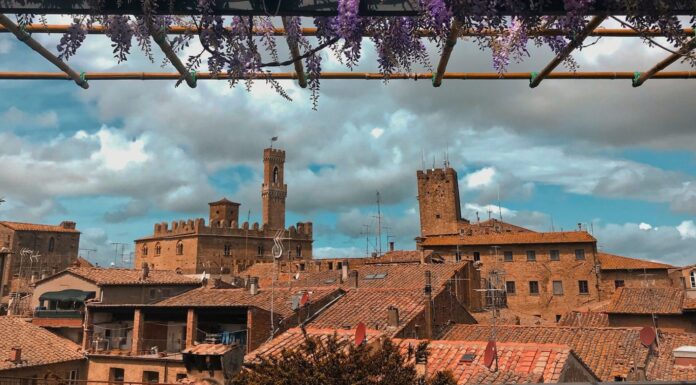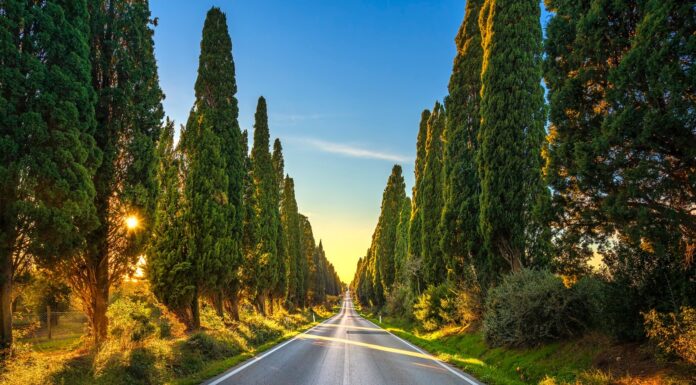Located in southern Tuscany, the ancient hill town of Sorano wows visitors with its beauty. Considered one of the “Citta del Tufo,” or “Cities of Tufa,” the picturesque village is perched on the edge of a dramatic tufa ridge.
With a rich history dating back to the Etruscan times, Sorano contains numerous worthwhile sites. Visitors are sure to enjoy the imposing Orsini Fortress or the incredible birdseye view of the surrounding Tuscan countryside from the Masso Leopoldino. A hike along the Vie Cave will satisfy any adventurer, followed by a soak in Sorano’s hot springs. Or simply wandering through the maze of charming cobblestone streets in the historic center is a memorable experience.
With a population of only 3000, picturesque Sorano may be easy to overlook when planning a trip to Italy. Read on to discover why you should consider adding Sorano to your next adventure in Italy.
Città del Tufo

Sorano is nicknamed the “Matera of Tuscany.” Like the famous city in the south, the unique town sits upon “tufo” or tufa rock. Tufa rock is characteristic of the southern Maremma region. It is a type of limestone rock formed from a volcanic eruption long ago. Sorano is considered a Città del Tufo, along with a handful of other villages in the area, like Pitigliano and Sovana. Tufa rock was used to construct many of the town’s historic buildings.
Top things to see in Sorano, Italy
1. Orsini Fortress
The Orsini Fortress is an impressive fortified castle dating back to the Middle Ages. The powerful Aldobrandeschi Family originally built it. Then in 1293, the last heir of the Aldobrandeschi married a member of the Orsini Family. Control was transferred to the renowned Orsini Family, who expanded the fortress to its present-day form. Eventually, the Republic of Siena took control of the fortress in 1417. Their rule lasted around 150 years until being incorporated into the Grand Duchy of Tuscany in 1556.
The fortress consists of two large corner bastions, St. Peter and St. Mark. The bastions were connected to the main gate by external and internal walkways. Many of these are still visible today, and walking along portions of the fortress walls is possible.
The Orsini Fortress houses the Museum of the Middle Ages and Renaissance. The museum is spread across seven rooms. Here you can find a fascinating collection of ceramics from Sorano, 5th-century frescoes, and information on Sorano’s history, including reconstructions and ancient maps.
Explore more: 15 Castles in Tuscany – An Enchanting World of Timeless Beauty
2. Sorano’s City Walls
A labyrinth of charming cobblestone alleyways is contained within the city walls of Sorano. A visit to the town would not be complete without a stroll through the narrow lanes. It is here where most of the historical sites are located.
There are two main gateways: Porta di Sopra and Porta dei Merli. Also known as the Arch of Ferrini, Porta di Sopra is at the bottom of the Orsini Fortress. Located outside the city door is a charming piazza with incredible views. Pass through Porta di Sopra, and follow Via Selvi to the historic heart of Sorano.
The Porta dei Merli, also known as the Porta di Sotto, is located at the base of the Masso Leopoldino. Amazingly you can still see the vertical openings for the chains of the drawbridge.
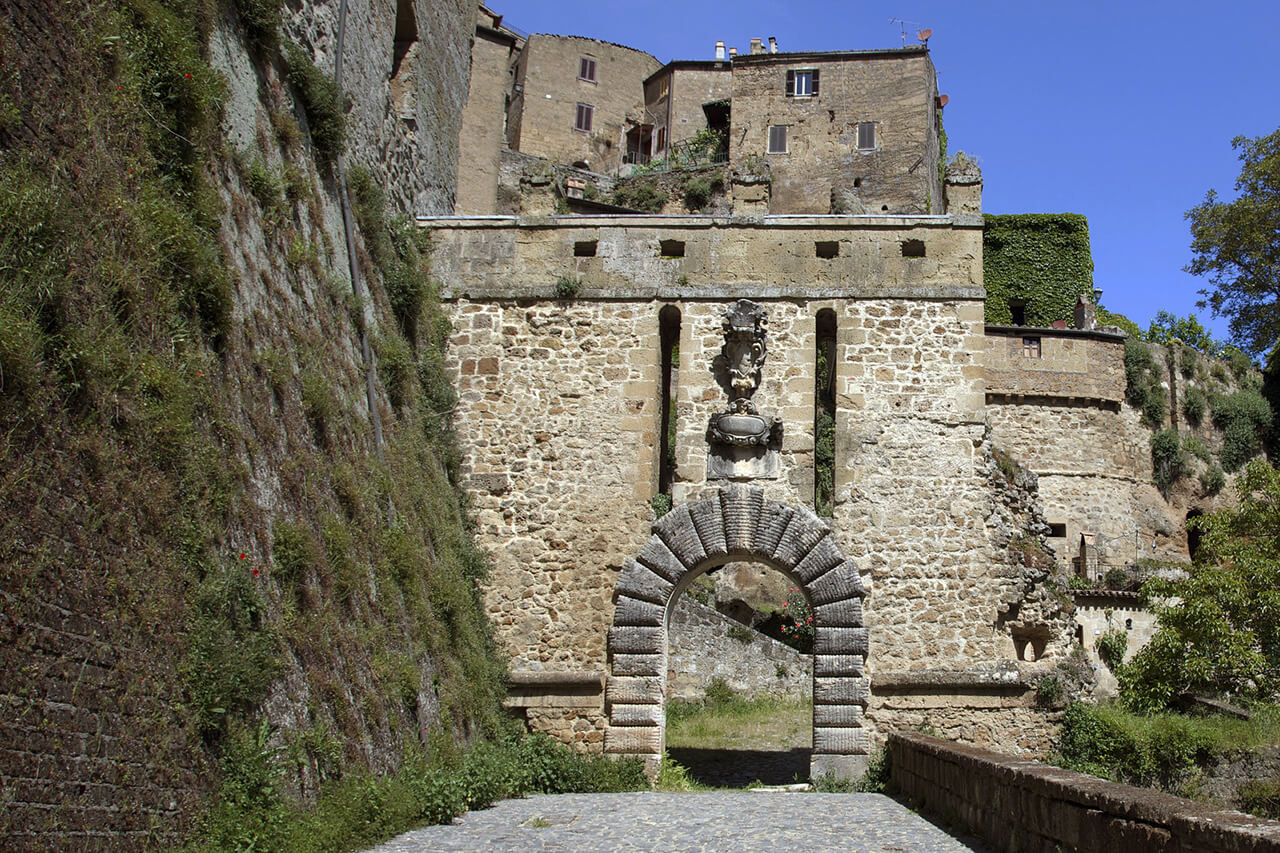
3. Masso Leopoldino
Masso Leopoldino is a fortified structure located in the historic center of the village. Built into the tufa rock, it was a vital part of the Sorano’s defensive system for a long time. Originally known as “Rocca Vecchia” or “Old Rock,” the original building dates back to the Middle Ages.
The structure was renamed in the early 1800s after Grand Duke Leopoldo II. He completed the restoration of it after a series of landslides between 1801 and 1804 resulted in extensive damage. Regrettably, the ancient church and parts of the original fortress were forever lost.
Near the top is a panoramic terrace offering breathtaking views of the Tuscan countryside. Also situated here is a medieval clock tower, making it the perfect spot for snapping some photos.
4. Collegiate Church of San Nicola
The oldest church in Sorano is located in the historic center, the Collegiata di San Niccolò. It was initially built in 1276 by artisans from Siena. The original church is no longer recognizable as it has undergone numerous restorations. You can find traces of the original masonry toward the back of the church.
Additionally, there is a 16th-century baptismal font and wooden crucifix gifted by Cosimo III de’Medici. The robe of Pope St. John Paul II is of particular interest in the church. It was a gift from Cardinal Angelo Comastri, who was born in Sorano. Additionally, you can find valuable artwork dating from the late Middle Ages to the 19th century.
5. Cortilone
Located at Masso Leopoldino, the Cortilone, or “courtyard,” was commissioned in the middle of the 16th century to serve as a grain warehouse. A large brick archway marks the entrance. Today you can stroll through the many rooms and admire the Renaissance architecture. The Cortilone also hosts exhibitions.
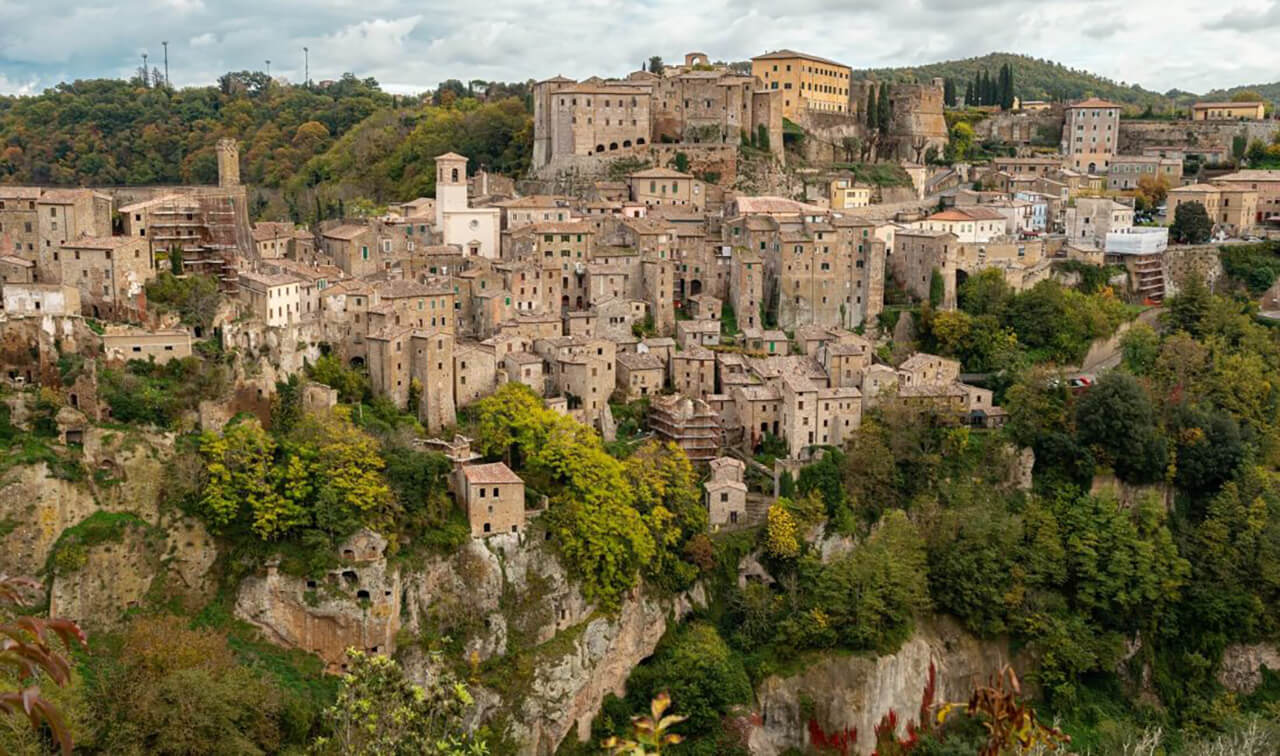
6. San Rocco Panoramic Terrace and Rock Settlement
Located approximately one mile outside of Sorano is the San Rocco Panoramic Terrace and Rock Settlement. This archeological park offers a panoramic terrace with spectacular views of Sorano and the surrounding valleys.
Several chambers are carved into the tufa rock near the perimeter of the terrace. Some of the chambers are of Etruscan origin and were once used as tombs, while others date back to the Middle Ages.
Near the entrance to San Rocco Panoramic Terrace is the small church of San Rocco. The inhabitants of Sorano built it between the late 15th century to the early 16th century. It contains an altar with 17th-century frescoes. Near the back of the church, you can find the Via Cava di San Rocco. Likely carved into the tufa rock by ancient Etruscans, the scenic pathway will lead you to the valley of the Lente River.
7. Jewish Ghetto
While Sorano may not have as much Jewish history as neighboring Pitigliano, it retains traces of its Jewish heritage. Sorano’s thriving Jewish community existed from the 17th century until the early 20th century. Dating back to the 16th century, the Sorano Synagogue has been restored in recent decades. You can find other traces of Sorano’s Jewish history, including markings of the Mezuzah symbol on some doors. Additionally, if you look closely, you can see the remains of door hinges, which controlled access to the ghetto. At night, the doors would close and then reopen the following day.
Things to do around Sorano
8. Vie Cave
The area surrounding Sorano is peppered with Etruscan-built pathways called Vie Cave. The enormous corridors were carved into the tufa rock, sometimes as far as 15 meters deep. The Vie Cave is located in the area surrounding Sorano, Pitigliano, and Sovana. It links many of the most important Etruscan sites.
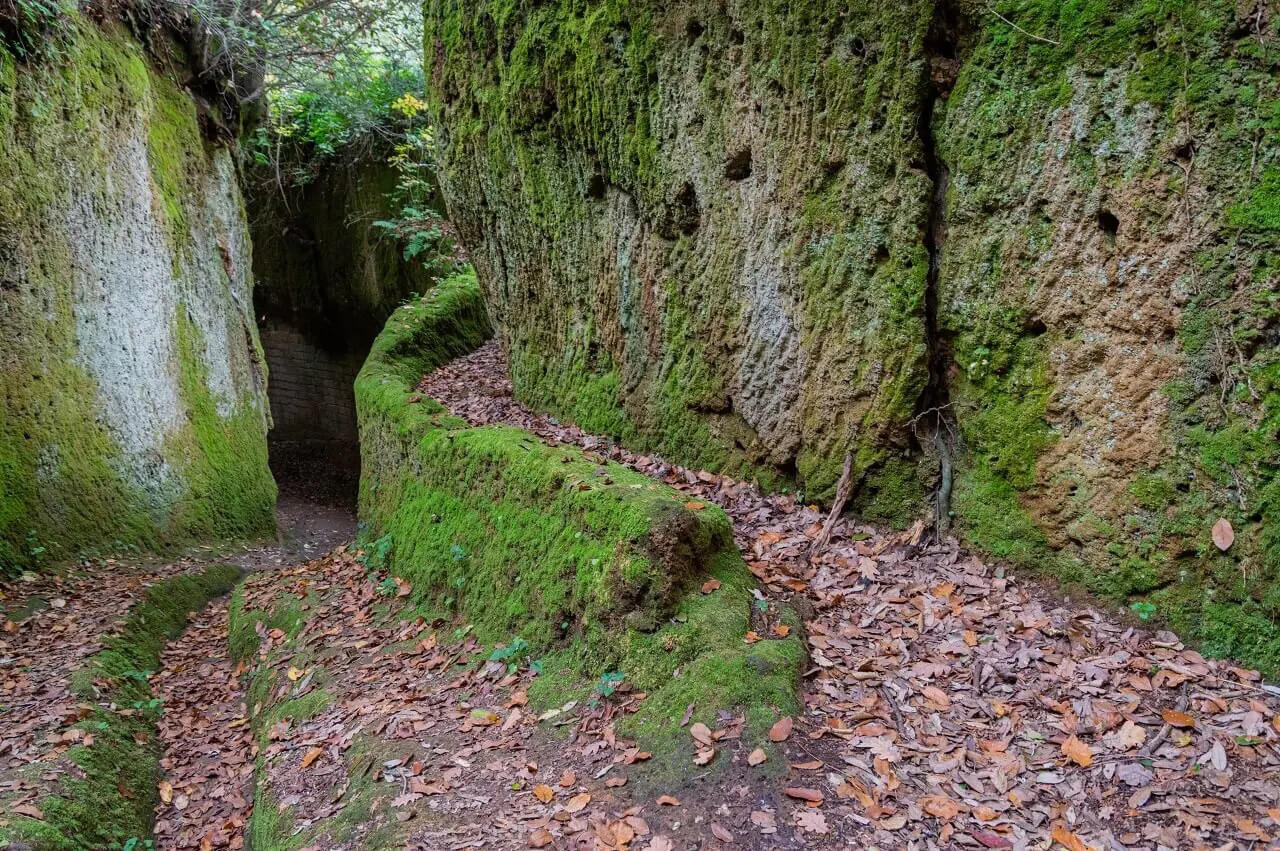
The exact reason why they were built is still unknown. They may have been used for military purposes, as a sacred route, or as a drainage system. While we may never know their purpose, a visit to the Vie Cave will undoubtedly offer you an incredible experience. It is a more intimate way to explore the area around Sorano. Spectacular views are guaranteed.
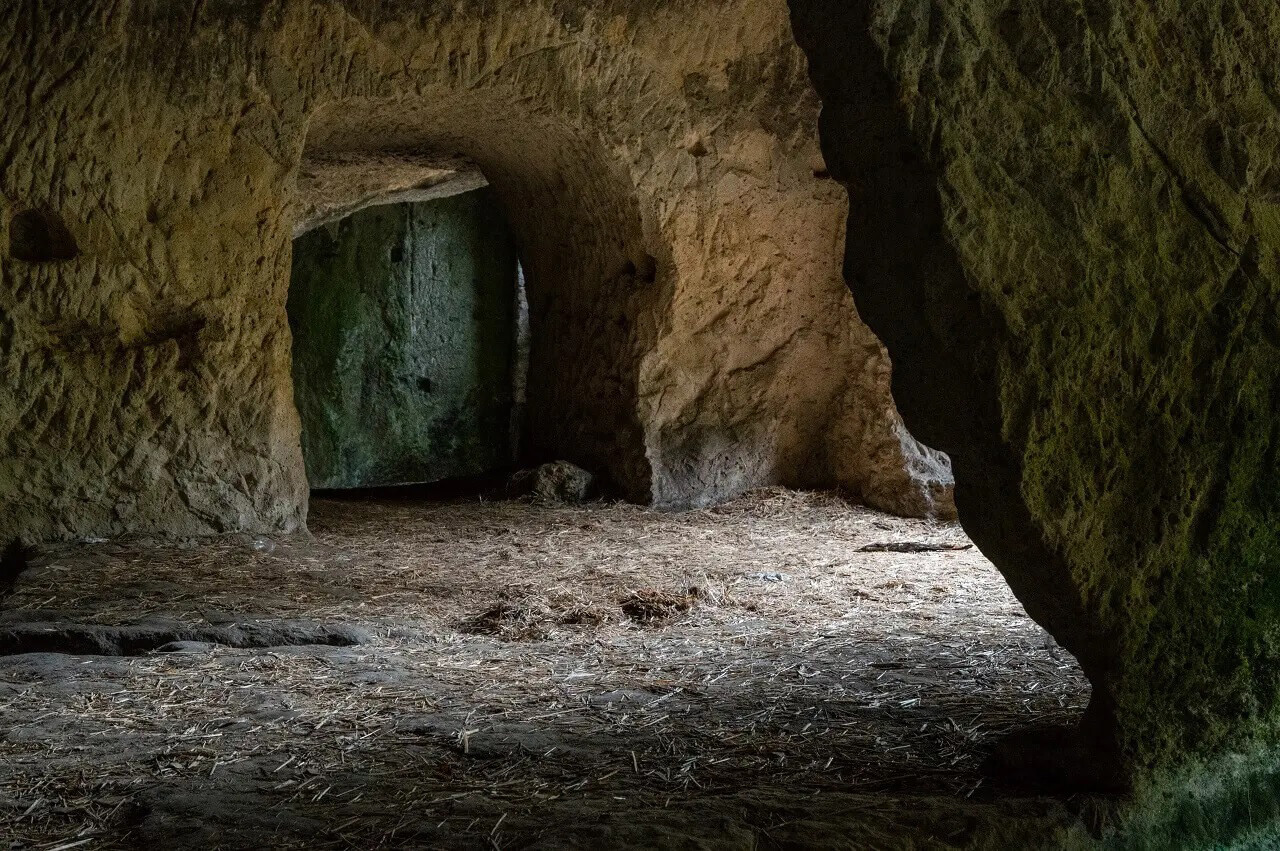
9. The lost town of Vitozza
Located within the municipality of Sorano is the lost town of Vitozza. Abandoned toward the end of the 18th century, it is one of central Italy’s most interesting rock settlements. It consists of two hundred man-made caves. Several of them date back to the Etruscan times.
Primarily inhabited between the 12th and 17th centuries, much of the remains of the medieval village are viewable today. Except for the fortress and church, all the structures were carved out of the tufa rock. Today you can explore the city walls, numerous houses, the remains of a medieval church, animal stalls, and even “columbaria,” where they bred doves.
10. Terme di Sorano (hot springs)
A visit to the Terme di Sorano, or the hot springs of Sorano, is a great way to add some relaxation to your trip. Terme di Sorano is just one of several hot springs in the Maremma region. The Sorano hot springs are significantly smaller than the nearby Saturnia hot springs, at 4.5 feet (1.4 m) deep, with the ability to hold approximately 15 people. Named the “Il Bagno dei Frati” or “tub of the friars,” it dates back to the 15th century. The friars who lived nearby frequently used it. It is powered by two thermal springs, with a constant temperature of 93 degrees Fahrenheit (34 degrees Celsius). To make a reservation, visit the Terme di Sorano website.
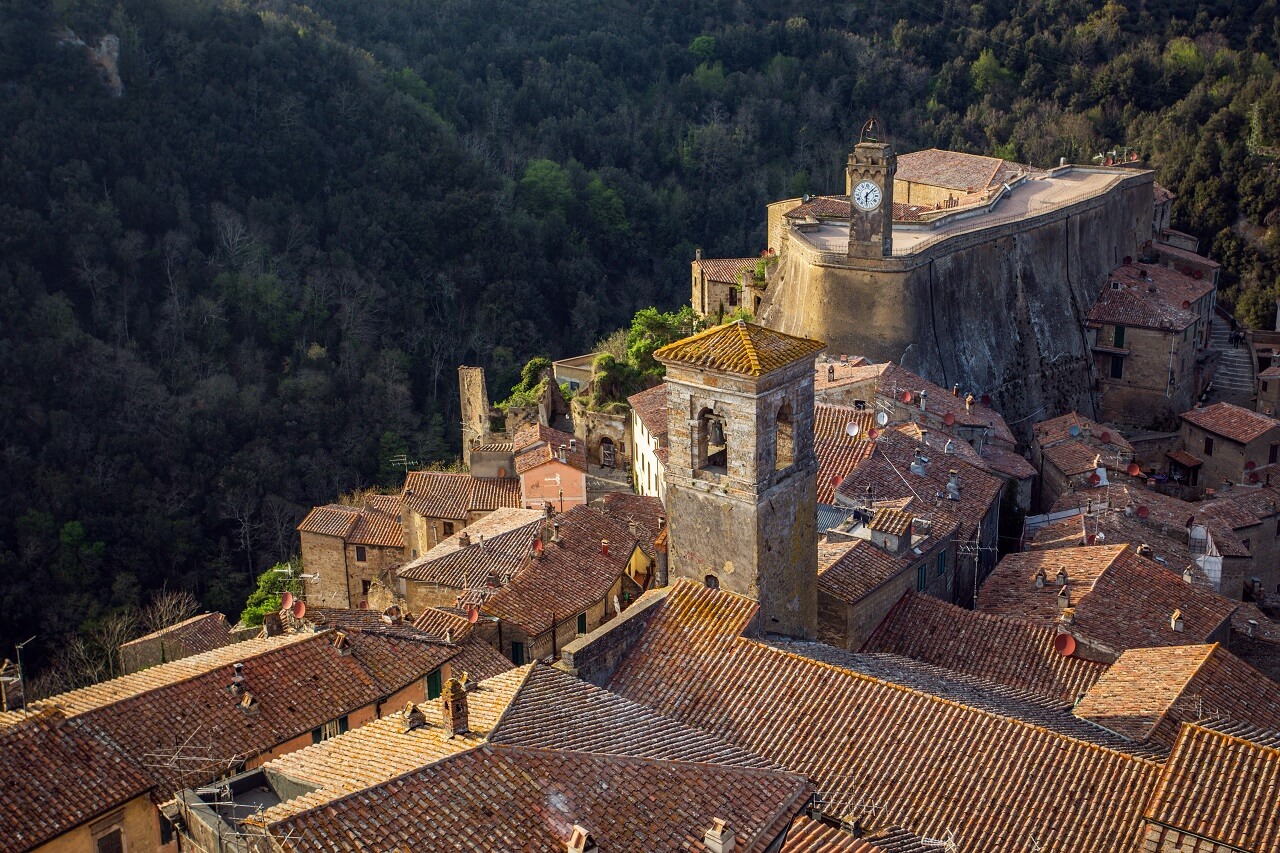
Suggested Accommodations
Sorano is an excellent base for exploring what the area has to offer. Sorano provides a mix of accommodation options. From farm stays to hotels to B&Bs, there’s something for everyone. Check out our recommendations for the best places to stay in Sorano.
- Working farm with local homemade meals-Located a 10-minute drive from Sorano, Bio Agriturismo Aia del Tufo produces olive oil and wine, among other products. It features an on-site restaurant serving Tuscan specialties using the farm’s organic produce. It is perfect for families and is home to goats, ducks, hens, and donkeys. They also offer various courses for children.
- Boutique hotel located in Orsini Fortress-You can stay in the town’s historic fortress at the Hotel Della Fortezza. With views of the beautiful Tuscan countryside, the charming hotel offers characteristic rooms with original 19th-century furniture, rustic tiled floors, and exposed wooden beams in some rooms.
- Budget-friendly B&B with mountain views-Located 13 minutes by car from the center of Sorano, Castelvecchio B&B e Bistrot offers a comfortable but budget-friendly option. Guests have access to a shared kitchen, garden, lounge area, and terrace. A restaurant is also on site. It has tastefully decorated rooms with modern and spacious bathrooms. Guests describe it as peaceful and cozy.
Where to Eat – Restaurants in Sorano
Fidalma
Fidalma is a classic restaurant, with a large room and an open terrace. The staff is friendly and it’s probably the best restaurant in Sorano. Come here to taste traditional, somewhat forgotten dishes such as acquacotta, the more famous ribollita and pici all’aglione. The appetizers and main courses are also excellent, which also include lamb, Florentine steak and a selection of cheeses produced by the Sorano dairy, paired with homemade jams.
Enosteria l’Ottava Rima
Upon entering the restaurant, the stone interiors, terracotta floors, ancient beams, extensive wine selection, and meticulous attention to detail instantly fascinate you. The restaurant carefully selects ingredients from local farms, resulting in tasty dishes like panzanella, Sorano broad beans, and oil-preserved pork. The selection of meats and cheeses is also excellent.
Osteria Maccalè
This tavern is located a dozen kilometers from Sorano, in the small village of San Giovanni delle Contee. The restaurant is welcoming, as are the staff and its cuisine, which is largely based on the tradition of this corner of the territory in the extreme south of Tuscany. The menu may vary, but you can find pici, tagliatelle, and other homemade pasta with local grains, Buglione lamb (a typical Maremma recipe), and acquacotta.
Nearby attractions
Pitigliano
Pitigliano is built upon a volcanic tufa ridge and is considered one of Italy’s most beautiful villages. It features a charming historical center and many Etruscan sites. It is nicknamed “Little Jerusalem” due to the presence of a Jewish community there since the 15th century. Visitors can enjoy exploring the Jewish Ghetto, Palazzo Orsini, Medici Aqueduct, and Fontana delle Sette Cannelle.
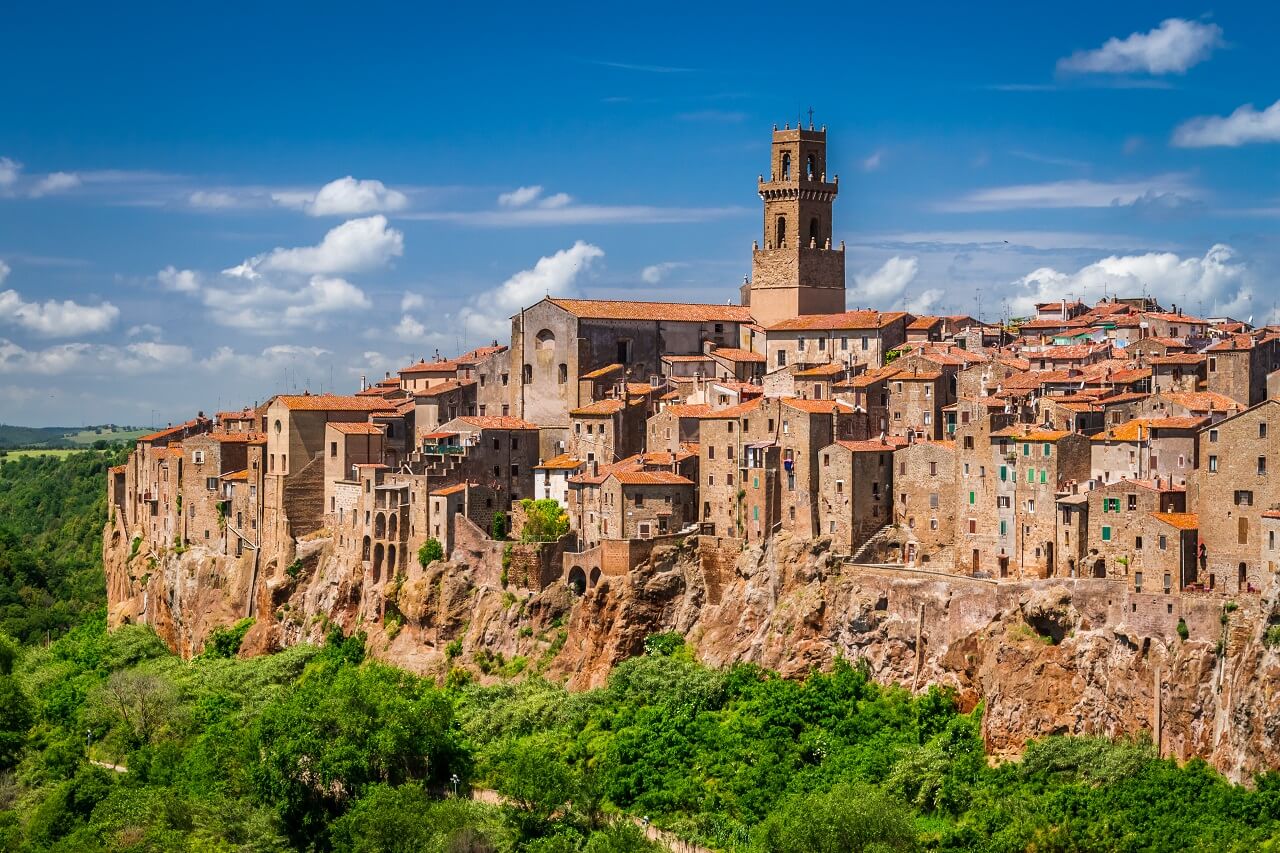
Sovana
Sovana is a delightful village also set upon a tufa ridge. You can explore the many shops and restaurants tucked away in the narrow alleys. There is an Etruscan necropolis located outside of Sovana. Ancient Etruscan pathways (vie cave) link it to the neighboring towns of Sorano and Pitigliano.
Saturnia (hot springs)
While the village of Saturnia itself is worth visiting, most people flock to the area for the thermal waters. Located a few miles outside the town is the famous “Cascate di Mulino” where visitors can enjoy the hot sulfur springs for free.
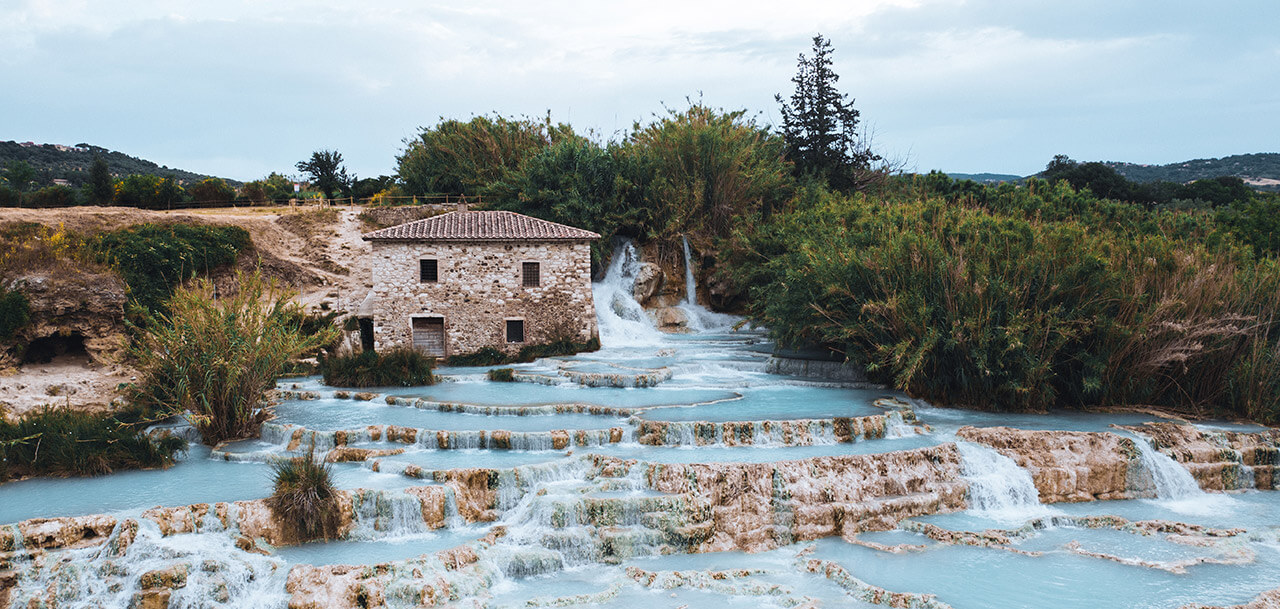
How to get to Sorano
Located just over 2 hours from Rome and 2 ½ hours from Florence, Sorano’s location makes it easy to add to your Italian itinerary. While renting a car is undoubtedly more convenient, it is possible to reach Sorano via public transportation.
- Car: Traveling from Florence or Rome, take Autostrada del Sole, exiting at Chianciano Terme. Follow the street signs for San Casciano del Bagni, Pitigliano, and then Sorano. From Grosseto, drive towards Terme di Saturnia and then follow the signs for Sorano.
- Bus: There are daily buses to Sorano, but it may be necessary to transfer buses. You can purchase tickets and locate timetables on the Tiemme website.
- Train: Sorano does not have a train station. The nearest train stations include Grosseto, Orbetello, Albinia, and Viterbo. You can purchase tickets and locate timetables on the Trenitalia website.
- Air: There are several airports to choose from when reaching Sorano. The closest major airports include Rome-Fiumicino and Rome-Ciampino (100 miles). Pisa Galileo International.


